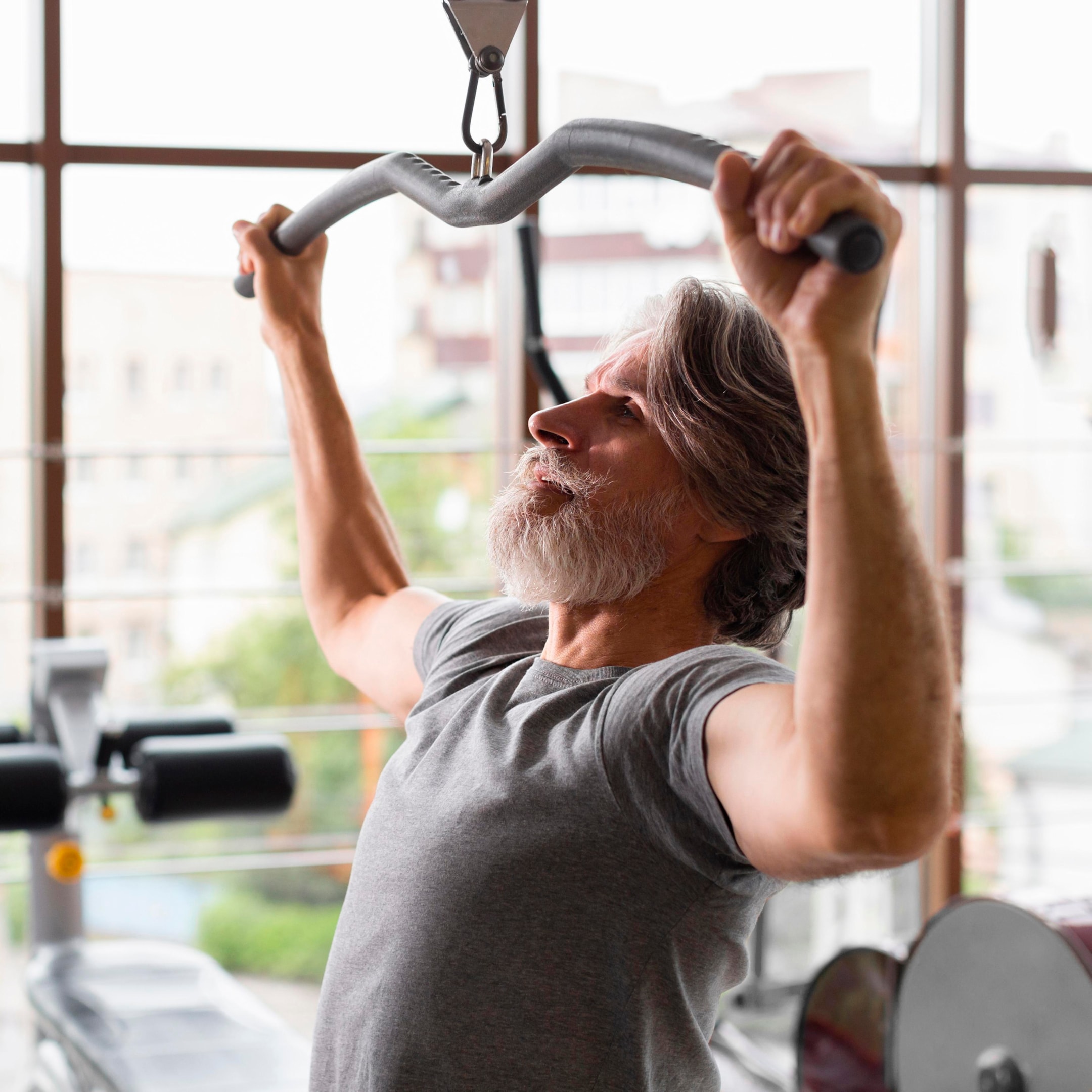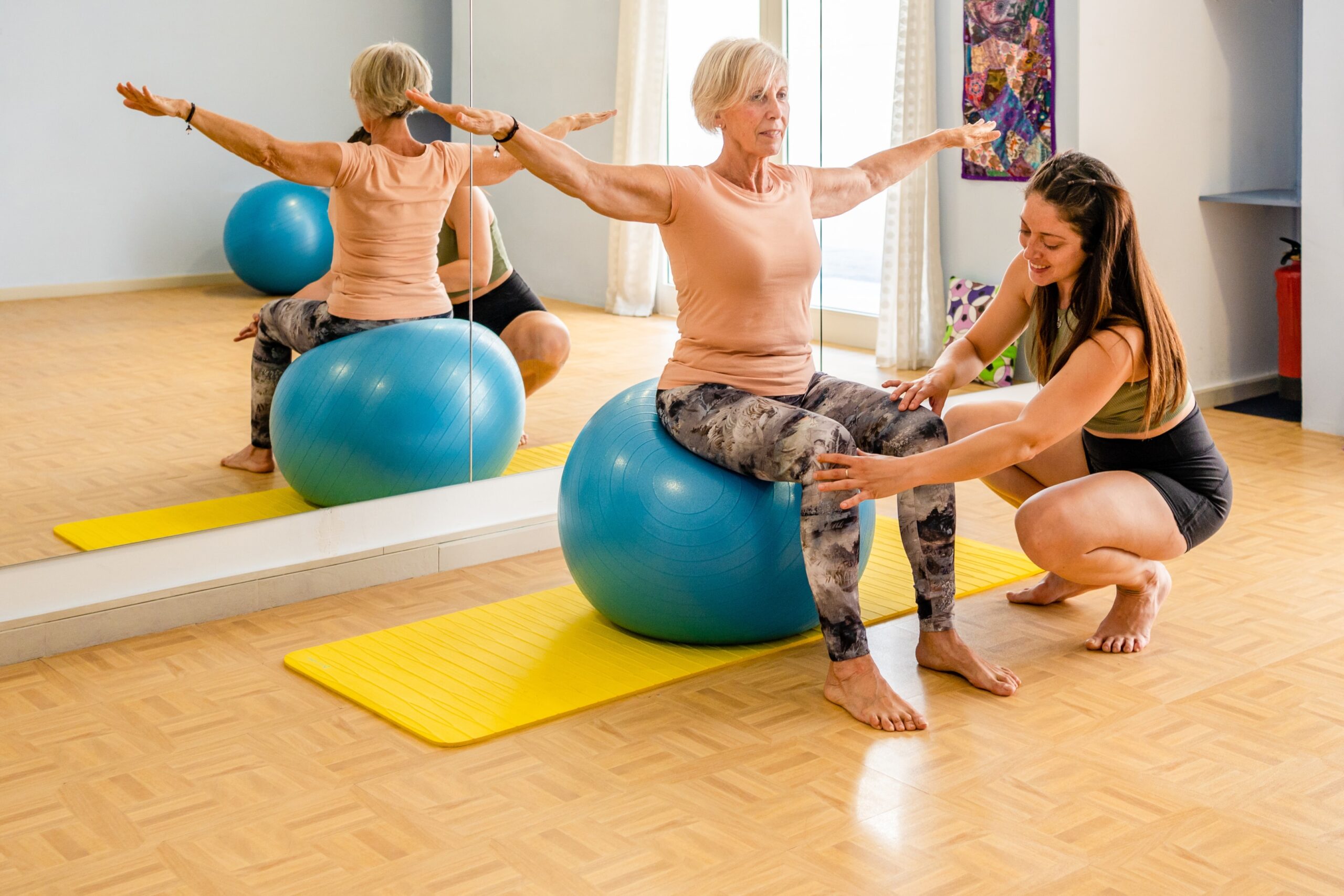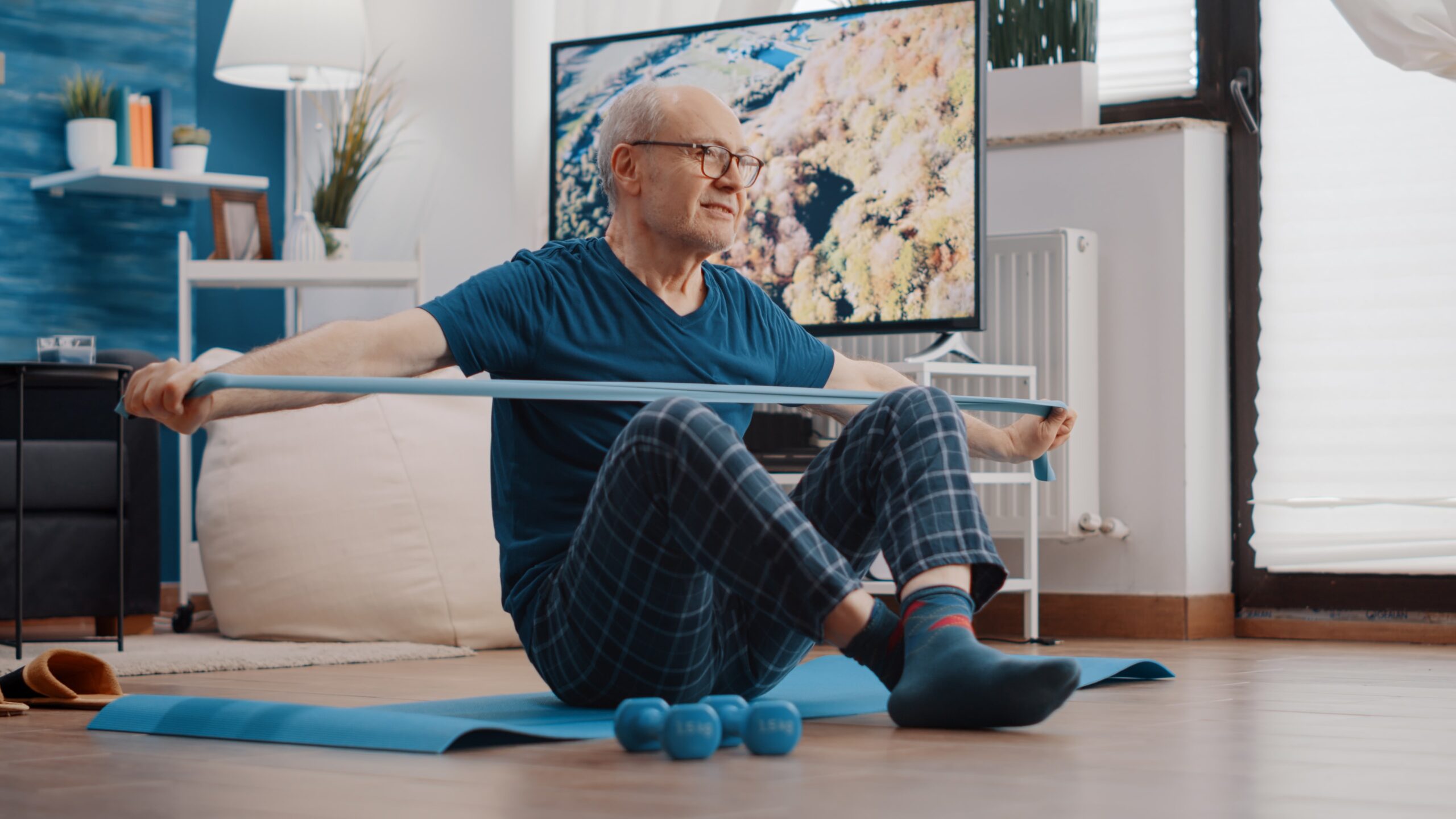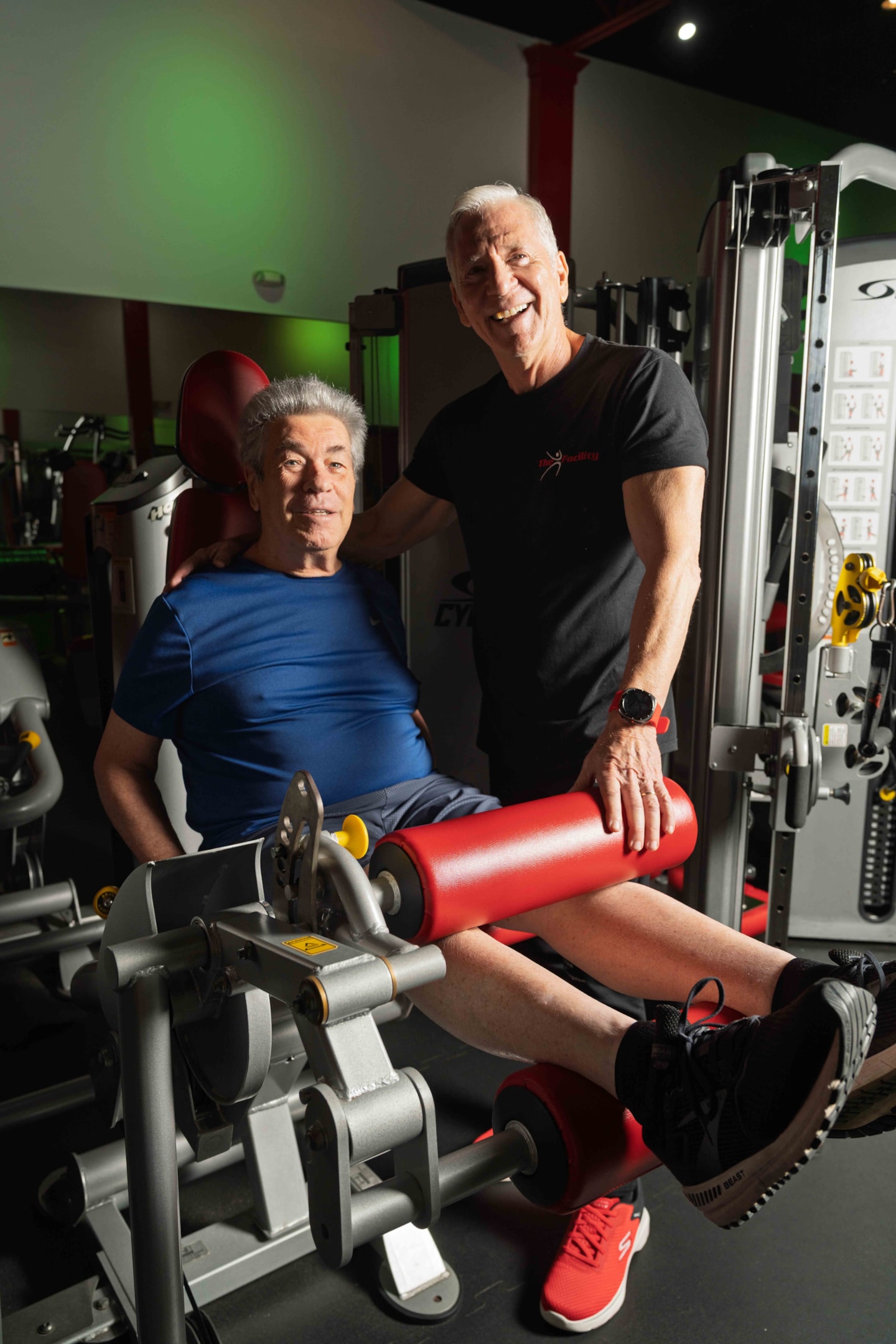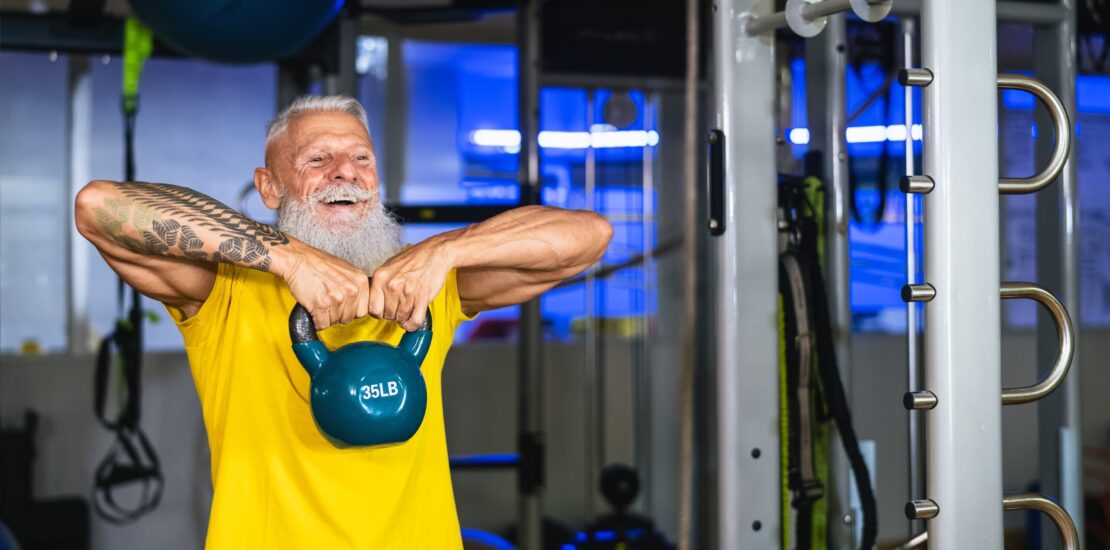
As we enter our 40s and beyond, the importance of maintaining strength, mobility, and physical resilience becomes more than a fitness goal—it becomes a foundation for long-term health, independence, and quality of life. Natural age-related changes such as muscle loss, joint stiffness, and decreased bone density can impact everything from energy levels to balance and injury risk. Fortunately, strength training offers one of the most effective and accessible ways to combat these changes and promote a vibrant, active lifestyle.
At The Facility for Personal Training in Boca Raton, FL, we specialize in working with adults over 40—including those with existing medical conditions or physical limitations—through personalized, science-based fitness programs. Developed by Dr. Barry Steinberg, our proprietary Dynamic Variable Neuromuscular Stimulation (DVNS) method provides a safer, more effective approach to building strength while protecting vulnerable joints.
In this guide, we share our top 10 strength training tips designed specifically for the 40+ demographic. These insights are shaped by decades of clinical knowledge, proven methodologies, and real-world client success stories. Whether you’re returning to exercise, managing joint discomfort, or looking to stay strong for activities like golf or pickleball, these tips will help you build strength with purpose, confidence, and control.
👉Also Read: Revolutionizing Personal Training: How AI and DVNS Science™ Are Transforming Fitness for Adults Over 40
Prioritize Joint Safety and Control
For individuals over 40, protecting joint health during strength training is essential. Prioritizing proper form with lighter weights is far more effective—and safer—than lifting heavy weights with poor technique, which can lead to injuries and long-term joint damage. Proper joint care not only prevents harm but also enhances the effectiveness of your workouts.
Focus on the accumulation phase of training, which emphasizes muscle development over maximum strength. This approach is particularly joint-friendly and sustainable over time. Core stability exercises are also vital, as they improve balance and help prevent falls, a common concern for older adults. The goal is to build strength while safeguarding your joints.
Incorporate joint-friendly exercises that involve controlled, low-impact movements and avoid placing unnecessary stress on the joints. A balanced training strategy supports your fitness goals while preserving joint health and mobility as you age.
👉Also Read: Fall Prevention Starts with Stretching: Why Boca Raton Adults Trust Our Flexibility Program
Focus on Functional Strength
Functional strength enhances your ability to perform everyday tasks efficiently and safely, reducing the risk of injury. As we age, maintaining independence becomes increasingly important, and functional strength training plays a vital role in supporting that goal.
This type of training emphasizes exercises that replicate real-life movements, such as squatting, lifting, and pushing. These movements not only support overall fitness goals but also make daily activities easier and more manageable. Strength training also fortifies the muscles that support and protect your joints, which is critical as muscle mass naturally declines with age.
Incorporating functional training into your routine should be a priority, as it targets meaningful movement patterns rather than focusing solely on appearance. Regular strength training helps preserve muscle mass, bone density, balance, and mobility—all essential for maintaining a high quality of life as you grow older.
Train with Progression, Not Just Intensity
A common mistake among those returning to fitness is training too hard, too soon. While motivation is essential, overexerting yourself with heavy weights before your body is ready can lead to joint strain and fatigue without meaningful gains.
Instead, focus on progressive overload—a principle that involves gradually increasing the resistance or complexity of your exercises to stimulate continued improvement. If your maximum strength allows you to lift 100 kilograms once, your goal should be to lift around 70 kilograms for 10–12 repetitions across three sets. This method builds both strength and endurance, without overtaxing your body.
Why is this important? The body adapts to the stress it is exposed to. If you consistently train at the same intensity without increasing the challenge, your body won’t develop beyond its current state. Conversely, if you apply steady, manageable increases in load, your muscles will respond by becoming stronger over time. This is particularly crucial for adults over 40, whose recovery and muscle-building capacity require thoughtful progression.
Incorporate Flexibility and Stretching Routines
Flexibility and stretching are often overlooked but are essential components of a comprehensive fitness routine. Regular stretching enhances flexibility, which is critical for joint mobility, muscular function, and reducing the risk of injury during physical activity.
At The Facility for Personal Training, stretching routines are thoughtfully incorporated into personalized programs to ensure clients receive a balanced and safe workout. Stretching improves blood flow to the muscles, helping to boost performance and support recovery. For best results, focus on major muscle groups and perform stretches only after properly warming up.
Aim to stretch at least two to three times per week. Group classes such as yoga or Pilates—when offered in a structured, supportive environment—can also be a great way to integrate flexibility work into your fitness journey. These routines support mobility, increase endurance, and contribute to long-term health and physical function.
👉Also Read: What Makes a Great Personal Trainer for Seniors in Boca Raton?
Use Resistance Bands and Machines
Resistance bands and strength training machines are highly effective tools for promoting safe and targeted muscle development, particularly for adults over 40. Incorporating these modalities into your training routine can offer a wide range of benefits, especially when safety, control, and joint protection are top priorities.
Resistance bands are versatile, compact, and easy to use. They can deliver comparable muscle-strengthening results to traditional free weights, making them ideal for use at home, in the gym, or while traveling. Their lightweight, non-bulky design allows for greater ease of movement and storage. Additionally, resistance bands provide adjustable resistance, accommodating all fitness levels simply by changing the band’s length or tension. This makes them a valuable tool not just for strength training, but also for Pilates, rehabilitation exercises, and low-impact cardio routines.
However, it’s important to maintain proper form and technique to avoid injury, especially when using bands for the first time. Regularly inspecting bands for signs of wear—such as cracks, fraying, or thinning—is also crucial for workout safety.
Machines, on the other hand, offer structured and guided movement patterns that reduce the margin for error. They are especially beneficial for beginners, individuals with limited mobility, or those recovering from injury or dealing with joint pain. Machines help isolate specific muscle groups, allowing for targeted strength building with controlled resistance and range of motion.
By combining resistance bands and machines in your training program, you can enjoy a well-rounded, joint-friendly approach to building strength, improving endurance, and enhancing functional movement—all essential components of healthy aging.
👉Also Read: Top Personalized Fitness Programs for Seniors in Boca Raton: What You Need to Know
Customize Workouts to Individual Needs
When it comes to fitness, one size does not fit all, especially for adults over 40. Customizing workouts to match an individual’s unique needs, goals, and physical limitations is essential for both safety and effectiveness. At this stage in life, a personalized approach helps prevent injury, accommodates health conditions, and maximizes long-term benefits.
Qualified personal trainers play a vital role in assessing each client’s fitness level, medical history, and physical capabilities. They design individualized workout programs that consider factors such as mobility, muscle imbalances, prior injuries, and chronic conditions like osteoporosis or arthritis. These customized programs are tailored to prioritize safety, manage discomfort, and sustainably build strength.
Trainers or fitness professionals also adjust exercise intensity and volume based on the client’s progress. This ensures workouts remain challenging without being overwhelming, allowing for gradual improvement while minimizing the risk of injury. Regular reassessments and modifications help clients stay on track and motivated throughout their fitness journey.
Importantly, trainers take into account medications, recovery time, and other health-related variables when creating a plan. This level of customization not only enhances results but also fosters a more enjoyable and empowering fitness experience, leading to greater consistency, better health outcomes, and improved quality of life over time.
Emphasize Recovery and Rest
Recovery and rest are just as important as the workouts. They enhance overall performance and health by allowing the body to recover after intense sessions. Older adults often need more recovery time than younger top athletes, as their bodies take longer to heal and adapt.
Focusing on recovery helps prevent injuries and supports the immune system. Adequate sleep is vital for muscle repair, hormone regulation, and mood improvement, making it key to any recovery strategy. Scheduled rest days prevent burnout and maintain mental well-being.
Active recovery, like light exercise or stretching, promotes blood circulation and removes waste products from the body. Incorporating different activities during recovery keeps workouts enjoyable and avoids repetitive strain. Strength training improves balance and coordination, reducing fall risk among older adults.
Train with a Qualified Personal Trainer
Partnering with a qualified personal trainer is a key step toward a safe, effective, and sustainable fitness journey, especially for adults over 40. Certified, licensed, and insured trainers are equipped to address the unique challenges and needs of this age group. Ideally, trainers should hold credentials in Exercise Science, Physiology, or Kinesiology, demonstrating their ability to support older adults with evidence-based practices.
Professional trainers provide:
- Structured guidance, motivation, and accountability are essential for maintaining consistency and overcoming obstacles along the fitness journey.
- Coaching support to keep clients motivated and committed, offering encouragement and adjustments as needed.
- Comprehensive initial assessments, including a consultation to evaluate current fitness levels and health status, are conducted to develop a customized plan.
By leveraging scientifically grounded training methods, personal trainers help enhance the safety and efficacy of workouts tailored to each individual’s goals—whether it’s weight loss, muscle development, improved mobility, or injury recovery. Nutrition planning may also be incorporated for a more holistic approach to health.
For adults over 40, training two to four times per week is typically recommended, depending on individual goals, availability, and physical condition. With professional guidance, this routine becomes both manageable and effective, supporting long-term health, functionality, and overall well-being.
👉Also Read: The Best Fitness Strategies for People Over 40 Managing Medical Issues in Boca Raton
Implement the Dynamic Variable Neuromuscular Stimulation Method
The Dynamic Variable Neuromuscular Stimulation (DVNS) method, developed by Dr. Barry Steinberg, is a state-of-the-art approach to personalized fitness. Key features include:
- Uses artificial intelligence to create highly customized training plans based on extensive client data
- Safely stimulates muscle while protecting vulnerable joints
- Particularly benefits adults over 40
The Facility for Personal Training in Boca Raton, FL, specializes in helping adults over 40 train safely and efficiently with the DVNS system. This method enhances personalized fitness protocols, ensuring that clients receive the most effective and safe training possible in our facilities.
Focus on Longevity Over Performance Metrics
As we age, fitness routines should shift focus from performance metrics to longevity. This approach improves overall health and functional ability with age. A long-term fitness mindset encourages resilience against chronic diseases and enhances quality of life, presenting a challenge to maintain consistency as we strive to achieve our goals with confidence.
Training for longevity emphasizes consistent, moderate exercise over intense sessions, making fitness sustainable. Staying active outside formal workouts, like walking or recreational activities, is vital for long-term health. This balanced approach to fitness ensures maintaining physical function and independence as you age.
👉Also Read: How Weight Training Can Transform Your Menopause Journey
Start Your Strength Training Journey Today
At The Facility for Personal Training in Boca Raton, FL, we empower adults over 40 to train with intelligence, purpose, and confidence. Whether you’re navigating age-related changes or simply want to feel stronger and more capable, our individualized programs can help you build strength and resilience for the years ahead.
Contact us today to schedule your consultation and discover how our science-driven approach and DVNS system can support your health, longevity, and performance goals.


